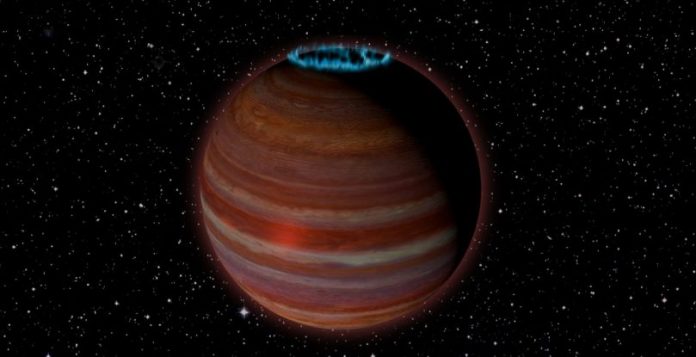Scientists are working to explain the presence of a mysterious large object floating outside the solar system that may be a rogue planet.
The object, officially named SIMP J01365663+0933473, sits just 20 light years away from Earth, which is extremely close by astronomical standards. In terms of physical traits, it’s slightly bigger than Jupiter, the largest planet of our stellar neighborhood, but weighs 12 times more than the gas-giant.
According to the team behind the detection, the object was seen all the way back in 2016, but during that time, scientists thought it was a massive brown dwarf — objects that are too big to be called planets but too small to become a small star.
However, follow-up observation from VLA confirmed that it still has a planetary mass (12.7 times of Jupiter) and is still far from becoming a brown dwarf. These were the first radio telescope observations of a planetary mass object beyond our solar system.
“This object is right at the boundary between a planet and a brown dwarf, or ‘failed star,’ and is giving us some surprises that can potentially help us understand magnetic processes on both stars and planets,” Melodie Kao, who led this study, said in a statement.
According to the researchers, this object came to be some 200 million years ago and is traveling all alone in the cosmos, with no other star in its proximity to revolve around. Its surface is heated up to about 825 degrees Celsius, which appears high by planetary standards, but is extremely less compared to the surface of our sun — heated up to a whopping 5,500 degrees Celsius.
More importantly, the team also noted that the planet is a magnetic powerhouse, with fields 200 times stronger than that of Jupiter. This, as the researchers described, was even higher than what has been observed in previous measurements of the body.
Originally, it was thought that brown dwarfs do not have magnetic fields, but over the past few decades, astronomers have noticed signs of magnetic activity as well as powerful auroras on these stars. On Earth, colorful auroras are produced from the interaction of its magnetic field and solar wind. However, lone objects, like the one detected in this case, do not have a source of solar wind.
Though this makes brown dwarfs really puzzling, the team believes further observation of this object could provide more insight into the formation of auroras.
“This particular object is exciting because studying its magnetic dynamo mechanisms can give us new insights on how the same type of mechanisms can operate in extrasolar planets — planets beyond our Solar System,” Kao added. “We think these mechanisms can work not only in brown dwarfs, but also in both gas giant and terrestrial planets.”















